The Many Faces of Mexico
City of Oaxaca, April, 2013
Walking and waving a branch of rosemary in an Easter procession while visiting the city of Oaxaca, I was surrounded by people singing Cielito Lindo, the unofficial Mexican anthem. It was 10 PM and I was swept along with the Easter crowd following a group of troubadours in festive costumes. Their lusty voices echoed through the narrow cobblestone streets. A band playing folk songs marched behind us, the two musical groups competing for attention with their continuous clashing melodies. People were in a jubilant mood.
I felt a million miles from my home in the borderlands of Arizona. This was one happy parade. The scent of the rosemary, the pageantry on this Easter night with a statue of the risen Christ carried on a dais of flowers, and the grand finale of elaborate fireworks that punctuated the darkening skies—all were a part of Semana Santa, or Holy Week in historic Oaxaca.
For a month I lived in a small village outside of Oaxaca studying Spanish and immersing myself in the traditions of Mexico at Casa Linda, an inn owned by my friend, Linda Hanna. Linda and I were neighbors back in the early 1970’s in Northern California, and for the past sixteen years she has lived in the village of San Andres Huayapam, a rural pueblo about 15 minutes from downtown Oaxaca. My host conducts folk art tours in the surrounding villages and is a passionate patron of the crafts of this region. She takes you to villages and markets where tourists are never seen.
I decided to create my own language school while spending time at Casa Linda, as I preferred the privacy of having a quiet room and place to relax, rather than living with a host family as is the custom with most language schools. Linda introduced me to a local village resident who is fluent in both English and Spanish. Each morning I took a ten minute walk to Francisco Gandara’s home, a young man who lives on a dusty country road a short distance from Casa Linda. We sit in his lovely garden, drink cedron tea (for any and all digestive ailments) and have a conversation in Spanish for 1 ½ hours.
We talk about our lives, our plans, our families, our pets, and the neighbor’s sheep whose incessant cries interrupt our morning lessons. Francisco acts as my teacher for a month, and our lessons are totally in Spanish. When I stumble on a word or conjugation, my teacher is able to correct my blunders in Spanish. No English. He has the patience of Job. He uses hand gestures and facial expressions, and miraculously, I understand what he is trying to say. After a few weeks I am thinking in Spanish, reading the signs and advertisements more easily, and comprehending most of what I hear. Plunging into the language is challenging and humbling, but I slowly attempt the verb tenses and idioms in the stores, the restaurants, the taxis, and on my walks around the village.
During the last week of April, Tiny Read, a long-time friend from Tucson, joined me in Huayapam. Together we met with Francisco each morning and had a 3-way Spanish conversation, which was even more stimulating and gratifying.
Afternoons were spent touring outlying villages with our host, Linda, observing the artists in their homes as they created rugs, ceramics, jewelry, and pottery. We took a cooking class in the Zapotec village of Teotitlán, the rug weaving pueblo. Preparing a mole negro enchilada dish with chicken, we began our feast with a taste of local mescal “for digestion.”
Shopping in the village market in the morning, we purchased the necessary ingredients with our master chef teacher, Reyna, pausing to inspect the cheeses, the tomatillos, the Oaxaca chocolate. Then we returned to her outdoor kitchen to pulverize the chilis, the spices, and the chocolate on a stone metate. The afternoon luncheon was perfection.
As I took in the traditions and richness of village life, I felt very far away from the issues of migration on the U.S./Mexican border. Most of the Mexican people I met had only a vague awareness of the lives lost in the Sonoran desert. When I spoke of the work of the Samaritans on the border, they were surprised to learn of the deaths, the military presence, and the detention centers in Arizona. It reminded me of the people in Iowa or Wisconsin who have only a nebulous understanding of what goes on in the borderlands.
Indeed, I wondered why anyone would leave the tranquil rhythms of village life or the hustle and bustle of the city of Oaxaca. I felt safe on crowded city streets, in the Easter processions with thousands of others, and walking alone in the mountainous villages surrounding Oaxaca. Walking the streets of San Francisco and Los Angeles and Tucson I observe more homeless poor begging for money and assistance than I saw in Oaxaca, Mexico.
I was always treated with utmost courtesy and respect, often receiving small gifts and tokens from people both in the city and the countryside. The Mexican people were generous and warm, curious about my presence in their villages.
During my immersion experience in Mexico I read of the Boston Marathon bombing and the panic and terror during this iconic American race. My Mexican friends were stunned about this tragedy as well, and worried about my safety when returning to Arizona. They were puzzled about the proliferation of guns and the politics of war in the U.S. How ironic that Mexicans view us as a culture of guns and violence, and we view Mexico as a culture of mayhem and turbulence as well. Truth be told, both countries have a history of violence, and explaining and justifying our actions is difficult and complex. We agreed that change must occur, as our countries are inextricably tied with a common border and billions of dollars in commerce.
Back to Arizona, April 24, 2013
During my trip back through U.S. Customs and airport security, I was stopped and detained for a short time because I had a candle in my suitcase. The candle, encased in glass like the sacred candles sold everywhere in the Southwest, was a special token from a memorial service of a dear friend who had recently died. Removing the candle, the Customs official examined it carefully and had it analyzed. I was informed that investigators were searching for possible explosives and hidden drugs. The incident was a sharp reminder that the U.S. was on high alert for terrorists following the Boston Marathon bombing. The entire security procedure took about twenty minutes, and the officials were polite, but officious and stern in their mission as they carefully searched everything in my carry-on bag.
Welcome home to the USA!
This past week I returned to el comedor to once again participate in helping the recently deported migrants in Nogales, Mexico on the U.S./Mexico border. The tragic stories and despair that I saw were difficult to integrate intellectually and emotionally after a month in Oaxaca. There were 130 migrants, maybe more. Many were women and children, including a seventeen year old mother and her six month old baby. A nine year old boy drew a picture of what he expects might be waiting for him in the U.S.—-a picture of the border wall and a dragon with fire shooting out of its mouth.
My Mexican friends in Oaxaca tell me that solving the immigration debacle is quite simple from their perspective: decriminalize the drugs on both sides of the border, stop the trafficking of guns from the U.S. into Mexico, and create guest worker visas so people can pass back and forth freely. “Most of the problems will disappear,” they tell me.
They also tell me that this will never happen. There is too much money and corruption involved for anything meaningful to occur between our countries.
I was a stranger in a strange land for a month in Mexico and felt welcomed and embraced in the mountain village of Huayapam. The people of Mexico were unfailingly kind to me when I was lost on a street corner or unable to explain my needs in Spanish. They demonstrated what it means to love your neighbor.
If we continue to live with the immigration policies as they are, we will continue to tear families apart and ignore the numbers of deaths in the desert. Indeed, the present immigration bill in Congress does not address the deaths in the Arizona desert, which continue unabated at 12-15 bodies per month.
We will miss out on a culture that enriches us with its food, music, art and hospitality. When I hear our politicians talk about Latino immigrants, I wonder if they realize they are talking about living, breathing human beings, with families, goals and aspirations. So many of the undocumented in this country are hiding more than their bodies in our cities and towns; they are hiding their dreams, their potential, their talents. They are students, farm workers, factory workers, and domestic workers, and are capable of much more if given the chance to develop their potential.
I feel shame about the way this country imprisons vulnerable people–people who do not deserve such punishment. The “crime” of crossing our border to find a better life is not deserving of months and years in detention centers. It is an unjust system of social control and one of the more profitable business enterprises in Arizona. I meet people at the comedor who have spent months in detention centers, only to be deported in the end. They then spend a few days in Nogales, Mexico, gather some necessary supplies, and once again cross into the United States trying to reunite with their families, risking everything. Some make it back to their loved ones; some don’t. Many never make it out of the desert alive.
Let’s end this thing.
We are a better country than this. The migrants of Latin America have suffered enough.
There was a Good Friday parade in Oaxaca—a silent parade, with only the slow cadence of the drum as thousands walked silently through the streets. Even the spectators were quiet and prayerful, remembering the suffering of Christ on this important day of Holy Week. In contrast, Sunday’s Easter evening parade was full of noise, song and fireworks—a celebration of life, with dancing and festivities.
I am ready for a celebration on the border. I am ready for a compassionate legislative immigration policy that respects the family, a work ethic, and the dignity of all peoples.
Casa Linda is a beautiful B and B in a rural village 15 minutes from downtown Oaxaca. Linda Hanna, innkeeper, will introduce you to a Mexico that few tourists see. Her website is: www.folkartfantasy.com
Her home is a quiet retreat from the noise and bustle of downtown Oaxaca. She will arrange for Spanish lessons with Francisco Gandara if this interests you. For lessons in Spanish conversation, a beginning knowledge of Spanish is necessary. Lessons are not structured with textbooks and assignments, but are purely conversation.
When making reservations, please tell Linda that you heard about her B and B from Peg Bowden, and you will receive a “friends of Linda” discount.
The Green Valley Samaritans are a non-profit group located in Southern Arizona made up primarily of retirees who are passionate about a humanitarian immigration policy in the borderlands. Their website is: www.gvsamaritans.org
Kino Border Initiative directs the operations at the comedor, a place of refuge for migrants from Latin America. The mission is to help make humane, just, workable migration between the U.S. and Mexico a reality. The website is: www.kinoborderinitiative.org
The Santa Cruz Community Foundation is a non-profit organization focused on encouraging economic, cultural, and philanthropic projects in the borderlands of southern Arizona. Bob Phillips, director of SCCF, can be reached at: rtp9@earthlink.net. Phone is: 520-761-4531

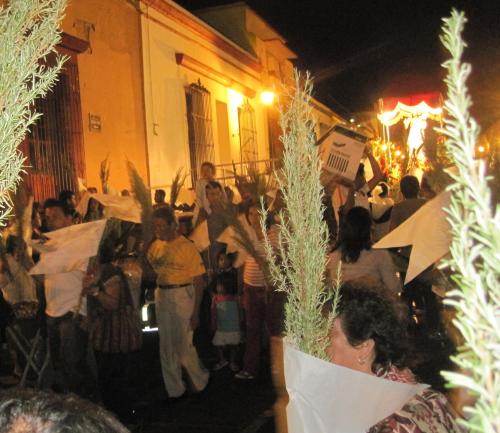
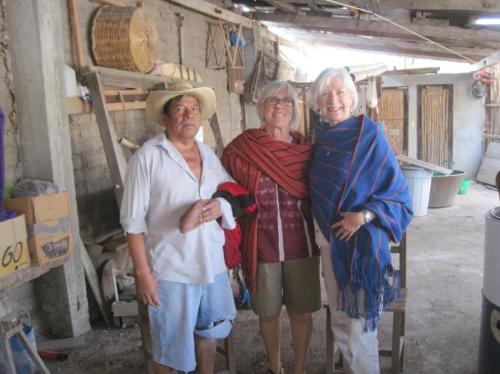
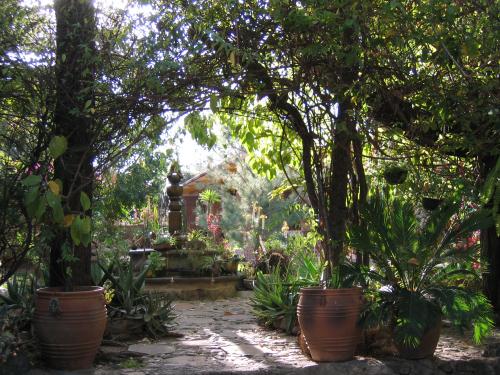
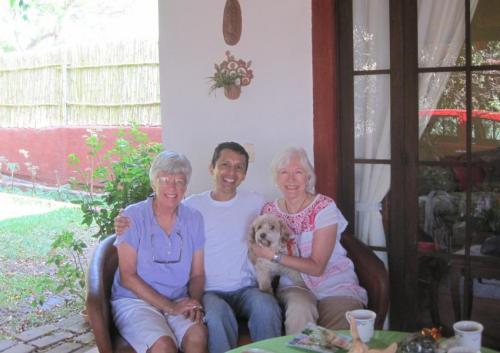
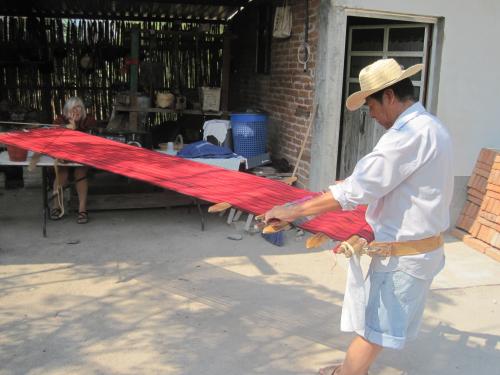
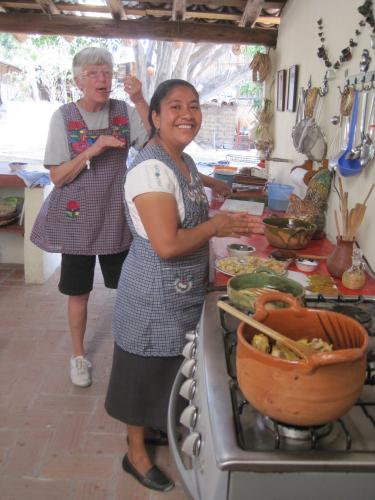
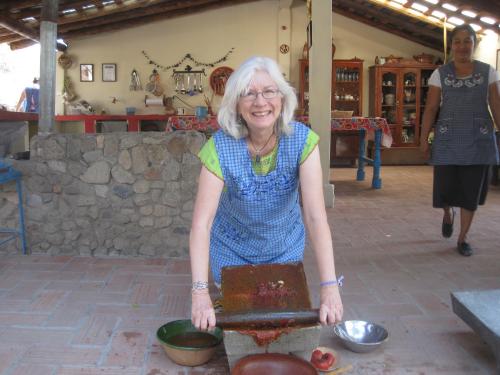
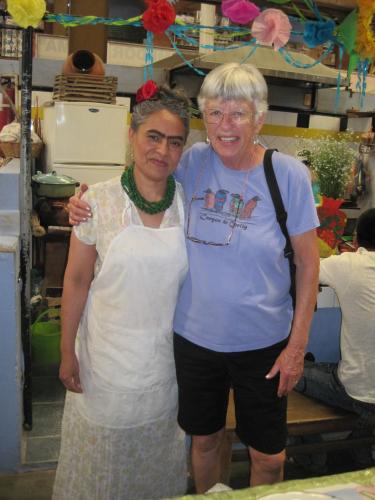
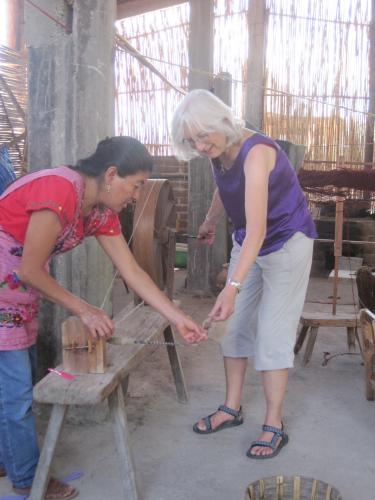
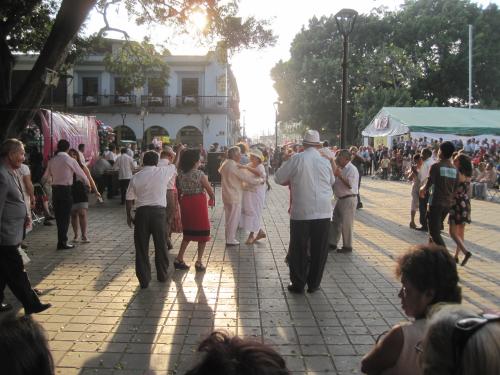
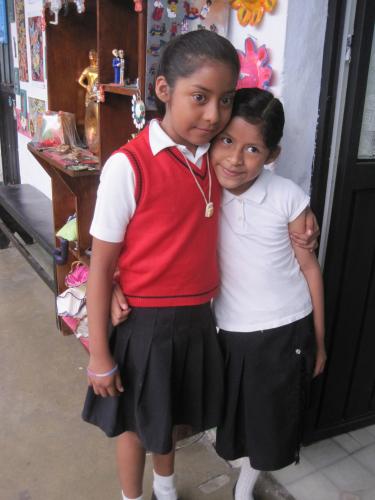
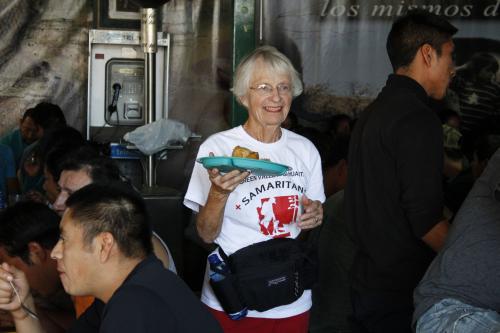
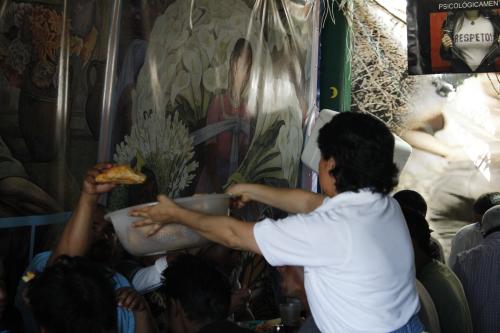
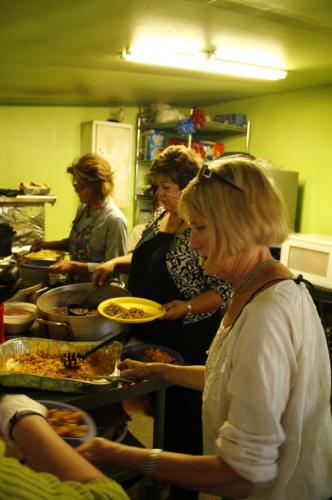
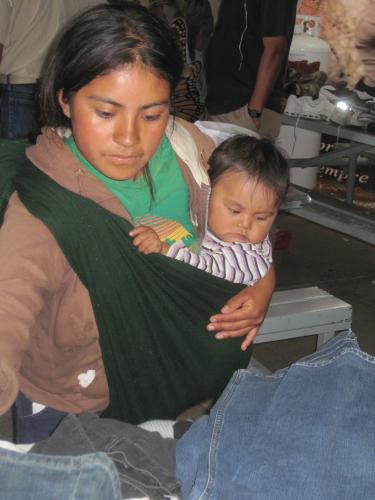
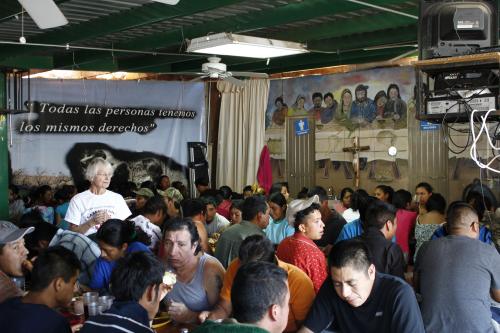
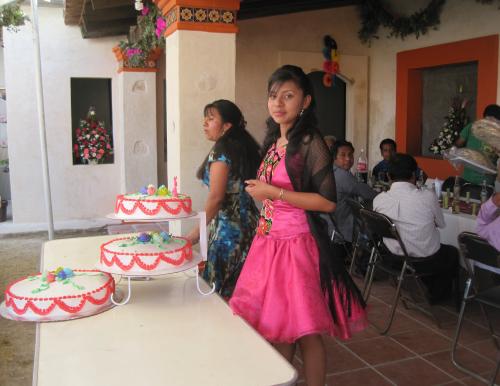
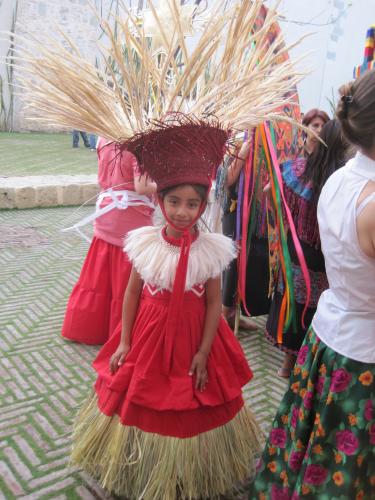

I feel so privileged to be part of your Blog. It was a wonderful and memorable experience indeed, and one which I hope will propel you forward with your BIG story! Thanks for including me on ‘The Many Faces of Mexico.” I wholeheartedly agree that my comprehension of spanish is mejor and my language skills are greatly improved….. we must convene in espanol un otra vaz…y pronto.
tiny
Hi, Peg,
I’m thrilled that you had your month-long time immersion experience, and I was hoping you’d share some of that experience with your blog readers. I’m intrigued by your friend’s inn and plan to google it- maybe I’ll make it there some time.
I wanted to tell you about a blog I have started on my new web site (still the same domain- http://www.danawildsmith.com, but totally recreated). In this weekly posting, I’ll be tracing the writing of my novel about undocumented migrants, from its very beginnings. I am posting the third column tomorrow. The focus is to be on my writing journey, but I will also touch on the issues surrounding border situations. If you’re interested, you can look at it, and click on RSS Feed if you want ti to be sent each week. I’d appreciate it if you’d pass the word along to any of your friends or blog followers who might also be interested.
BTW- the photos will eventually, when I reach that point in the postings, include Comedor photos.
Thanks,
Dana
Wow, girl, one of your best blogs ever! Thought-provoking and fascinating.
Jan
A perfectly lovely story of your time in Oaxaca. What a pleasant surprise and how different from what we experience at el comedor.
Welcome back. I’m in NE and will once again look forward to your blog.
BTW, if you haven’t read Reyna Grande’s The Distance Between Us, I heartily recommend it to you. I missed seeing her at TFB, darn it, but did buy her two most recent books. The distance Between Us is a memoir of her own experience coming from Iguana (not sure what state) in southern Mexico, the frightening crossings (it took three tries in 1986 for her family to cross), and living in the shadows in the US, all while trying to please her alcoholic father who insisted she and her siblings succeed and achieve in school.
Maggie
Peg,
I read and savored the photos of your journey. I’m jealous on a couple of levels: the cooking, the eating, the language.
And you should know how grateful I am to see you commitment to humane justice continue to play out in your life (which then plays out in mine and in ours). I’m grateful to share the planet with you and to be under these stars.
Blessings on those you love and on yourself. You are a sharp tool in the hands of love.
Thank you for honing your own heart so mindfully.
It is an honor to be a witness.
An honor, dear sister.
An honor,
with love,
s.
The first casualty of war is truth.
– Aeschylus, a veteran and playwright (c. 525-456 BC)
Looks like a wonderful time and a beautiful trip. I adore “Frida!”. In high school, I sewed a skirt of canvas and painted “The Two Fridas” on it, then wore it to a show dressed as her, as well.
I felt the same hostility when going through Canada. It was a terrible feeling– to be targeted, searched, questioned, the answers immediately not believed. I almost burst into tears. And the Mexicans trying to cross the border, and even the ones who are legally in the country, all have it much worse. I hope things will change, too, no matter how unlikely it seems. People shouldn’t be treated this way.
Welcome back, Peg!!!
What a wonderful place you were at. Sounds like you had a great time there. We forget here how nice it is in Mexico. I haven’t traveled through Mexico in several years and I think I am ready to go there again soon or maybe Central/South America.
Cheryl Osburn